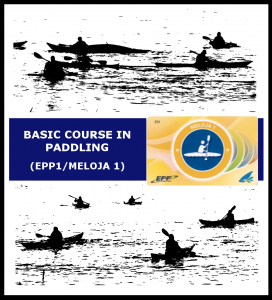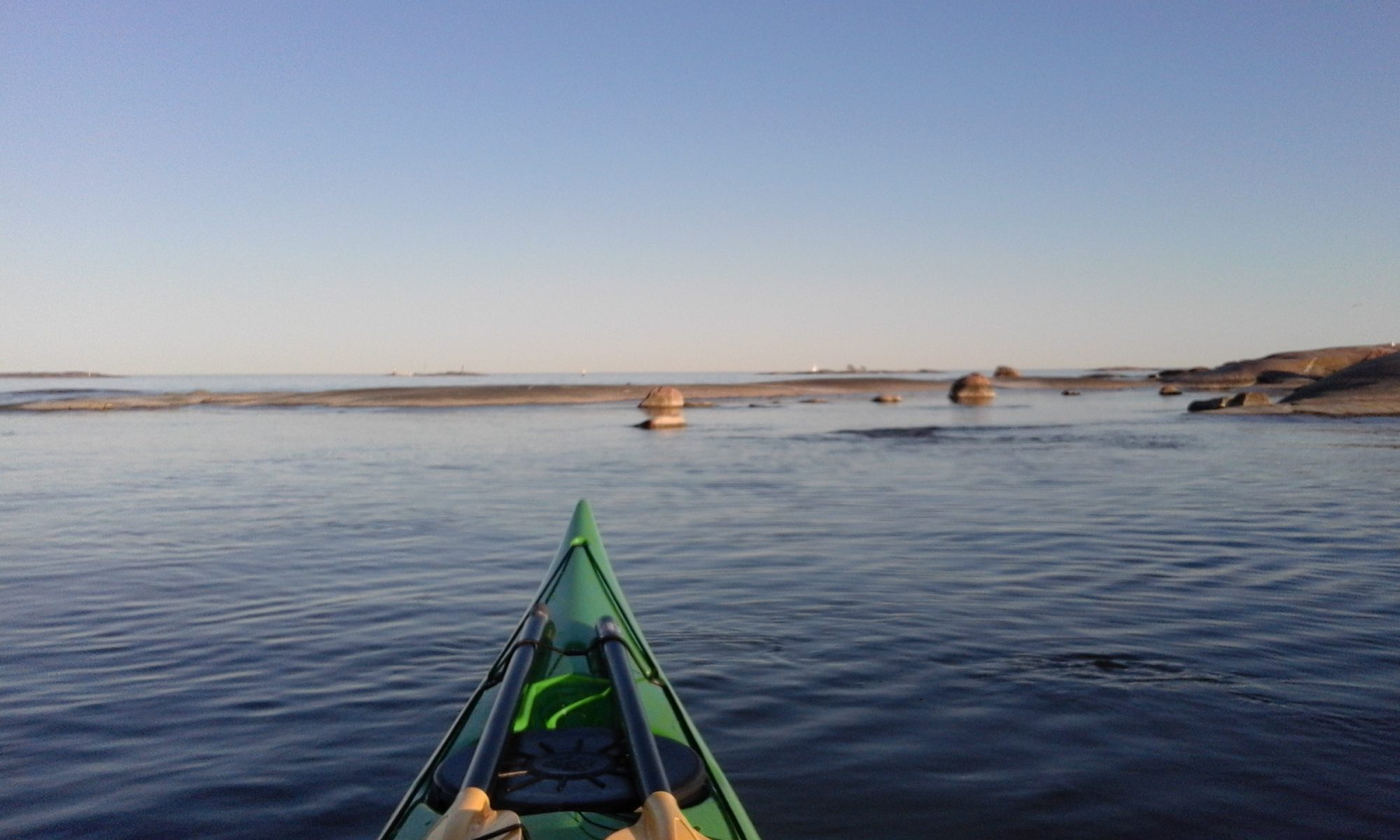
Basic course in paddling (EPP1/Meloja 1)
This basic course in paddling fulfill the recommendations from the Finnish Canoeing and Rowing Federation in terms of course content. The course consists to a great part of paddling exercises in practice, and to a small part of theory. The course makes a good base of paddling knowledge and paddling skills, and also good preconditions for continued paddling.
After you have completed the basic course you mange to paddle in calm water, as well as take part in guided paddling tours and paddling exercises.
After completed course you receive a diploma. If you also completed the course successfully according to the recommendations of the Finnish Canoeing and Rowing Federation, then, for an additional fee, you can also receive a plastic card as a proof of passing the competency test EPP1/Meloja 1. You could need to show this card for example when hiring a canoe or when applying for a membership in a paddling club.
EPP (Euro Paddle Pass) is a standard for 5-step competency test being established in Europe.
Degree of difficulty: Easy
Requirements: Be able to swim 200 meters and at least 15 years of age. If you are under 18 years of age, an adult responsible for you needs to participate in the same activity as you. No paddling skills required.
Number of participants: 2-6 pers
Course length: 12 hours (2 days)
Time: Course starts at 09.00, and finishes at 15.00
Price: 75 eur (Loppi); 100 eur (Helsinki, Espoo)
Additional fee: 15 eur, Meloja 1 card (this additional fee can be paid after the course)
Date and place:
Lauttasaari, Helsinki: 11-12.5; 15-16.5; 25-26.5; 8-9.6; 6-7.7; 20-21.7
Lehtisaari, Helsinki: 15-16.6
Kivenlahti, Espoo: (?)
Punelia/ Sakara, Loppi: (?)
Loppijärvi, Loppi: 18-19.5; 1-2.6
DURING THE COURSE WE GO THROUGH THE FOLLOWING
SKILLS
Getting in and out of the kayak, dock and natural shore
Spray deck mounting and dismounting
Balanced, relaxed paddling posture
Forward paddling
Reverse paddling
Stopping
Paddling sideways
Brace support and preventing capsize
Steering and turning the kayak using paddle, rudder, skeg and weight redistribution
Capsizing the kayak, and with assistance climbing back into the kayak
Form a raft, and break up a raft
Use of rudder and skeg, adjusting the footrests
Performing a safety check of the kayak before going out on the water, make sure the floating capability is good
Proper equipment handling and service, good method of carrying the kayak
KNOWLEDGE
Basic knowledge of paddling and equipment, choosing and adjusting equipment
Suitable clothing according to current circumstances
Equipment: kayak/ canoe, life vest, spray deck, paddle, kayak/ canoe floating device, helmet
Safety knowledge and good sense
Ability under current circumstances to assess one’s own capacity
Make sure someone ashore has got information about your paddling tour (paddle log, person)
Paddling in group: group discipline and communication
Wind, waves, streaming water, weather
Other surrounding boat traffic, boat lanes
Different paddling environments: difference between streaming water and sea
Rescue measures depending on current circumstances and type of kayak/ canoe
Importance of nutrition and liquid
Hypothermia – preventing and simpler treatment instructions
The right of public access, where you are allowed and not allowed to paddle or to land, and also environmental knowledge
Club activity and presentation of different paddling disciplines

